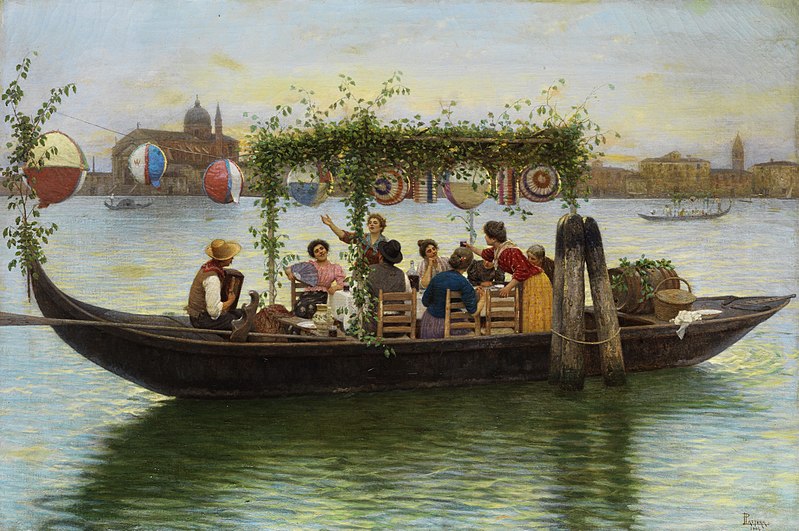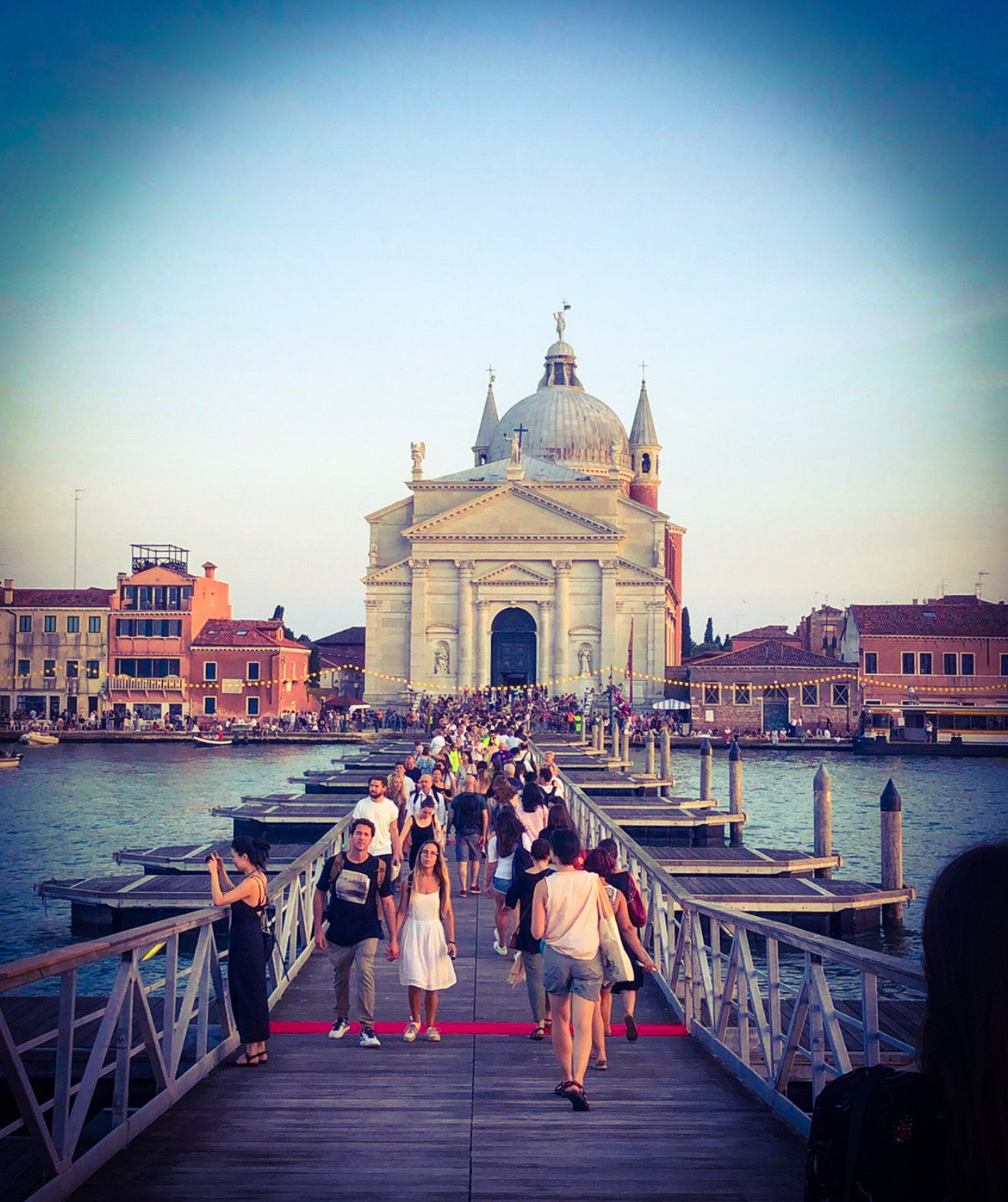Also this year Venice celebrates the Redeemer!
On July 18th, the third Saturday of the month, as per tradition, the lights of the most magical night are lit in the Lagoon. But this time, this feast will be more emblematic than ever, perhaps the most symbolic from that distant 1576, the one that seems to have more similarities with its origins, no longer just celebration, remembrance, but real request: in those years they sought the grace to Christ the Redeemer to defeat the plague, today the hearts and prayers of all ask for liberation from this common and invisible enemy that has brought us all to our knees. With great strength and tenacity we got up, we are still fighting, and this is why the City and the population strongly wanted the feast to be celebrated even in this terrible 2020: to start living again! The religious sense is combined with folklore and joy, and this year also the great desire to start again.
We are doing it and we will do it with civic sense and great responsibility, and this is why the most magical night in Venice will be different, but certainly no less empathic and full of charm!
But let's take a step back...

Party 2020: a romantic and responsible Redeemer

As announced, the City of Venice has strongly wanted the feast of the Redeemer to see the light also in this 2020 marked by the Covid-19 emergency. What the Municipality wanted to transmit to its citizens and tourists is the desire to restart, to regain possession of the common spaces and the cultural and religious traditions linked to the territory. "We need to start living again, but we need to do it with responsibility and with all the necessary guarantees", these are the words of the mayor Luigi Brugnaro, and this is why the Redeemer has a great symbolic value in this 2020 because it is an opportunity to give a different message of positivity and hope, of that confidence in the future that we all tremendously need. Obviously, as the first citizen wanted to emphasize, the festivities will take place with the sense of responsibility that has always characterized Venice, therefore paying particular attention to the way the event will take place, ensuring the safety of everyone, Venetians and tourists. The suggestive votive bridge will be, as per tradition, the setting for the inauguration of the celebrations on Friday 17th July (!!!) attended by the Mayor, the Patriarch, Francesco Moraglia and the main city authorities, and which will start the liturgical functions. Not only the bridge to emphasize the connection between the mainland and the island, but also the typical illuminations, lit from Saturday, July 18, which will adorn the Fondamenta delle Zattere and Giudecca, creating a continuum between land and sea in a wonderful play of light and shadow, that only Venice can give. Also on Saturday evening, music will invade the entire Grand Canal thanks to the "cool nights" that will spread different types of music, to please everyone, in a path that will start from the train station of Santa Lucia, arriving then to Punta della Dogana and Giudecca. The musical evening will continue, thanks to the collaboration of the exhibitors who will make available the stalls of their premises to offer music and concerts. On Sunday 19th July there will be the traditional Venetian rowing regattas, in which adults and very young people will compete in their respective categories to win the podium, giving the spectators an exciting show. There will be the typical tables on the banks of the Giudecca, during which, in a spirit of conviviality will be eaten typical dishes of the festival such as pasta and fasioi, sardines in saor, bigoli in sauce, bovoleti, stuffed duck and the inevitable watermelon, all washed down with the classic shadows de vin and icy spritz! The magical night of the Redeemer by tradition ends at dawn on Sunday with a swim in the cool waters of the Lido, and I'm sure that this year too there will be no lack of patrons!
The only missing element of this Redeemer 2020 will be the fireworks that, although among the most beautiful and expected in the world, would have caused excessive crowds. The mayor, in the press conference held on July 9, apologized to the citizens taking responsibility for his decision, calling it a choice of conscience, first of all. It is right, however, to underline that, despite the fireworks display has always represented a fundamental aspect of the Redeemer, also this edition, despite this substantial lack, will be able to give in these three days, beyond the religious aspect, carefree and serenity as well as an opportunity to experience the magic of Venice.
It is precisely this absence that will make the Redentore 2020 less scenic, but more intimate, warm, romantic. As always, not to be missed!
The church: the temple of Palladio and all Venetians

Redeemer 2020: the programme
The Redeemer 2020 programme:
Friday 17th July
- From 8:30 p.m. Opening of the votive bridge (open until midnight on Sunday, July 19).
Saturday 18th July
- Lighting along the banks of the Rafts and Giudecca
- From 7:00 p.m. to 11:00 p.m. Itinerant music on the Grand Canal, San Marco Basin, Zattere and Giudecca
Sunday 19th July
Start of the regattas (the route runs along the Giudecca Canal)
- 4:00 p.m. regatta on pupparini to two oars of guys
- 4:45 p.m. regatta on pupparini with two oars
- 5:30 p.m. two oar gondolas race
- 7:00 p.m. Votive Holy Mass at the Church of the Most Holy Redeemer
Note: From Friday evening until Sunday will be active the substitutive line of the Ferry San Nicolò - Punta Sabbioni and in extraordinary way both on Saturday and Sunday, with two runs on the outward and two afternoons on the return, will be made an extraordinary ferry from Tronchetto, along the Vittorio Emanuele, to Alberoni, reserved for pedestrians and cyclists.










Lascia un commento